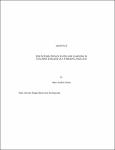Mostrar el registro sencillo del ítem
The integration of faith and learning in teaching english as a foreign language
| dc.contributor.advisor | Bouvet de Korniejczuk, Raquel Inés | |
| dc.contributor.author | Szallós-Farkas, Márk | |
| dc.date.accessioned | 2019-07-18T15:11:31Z | |
| dc.date.available | 2019-07-18T15:11:31Z | |
| dc.date.issued | 2018 | |
| dc.identifier.uri | https://dspace.um.edu.mx/handle/20.500.11972/1063 | |
| dc.description.abstract | Maestría en Educación | es_MX |
| dc.description.abstract | This research is qualitative in nature, and the analysis, interviews, and questionnaires in the document were used in order to identify the quality of existing material in the field of English teaching for children, and how children perceive the material. There are a lot of high quality English as a second language teaching books made by secular companies, as well as lower quality ones. The problem with them all is that they do not reflect the Biblical worldview and often include topics that are antagonistic to it; topics like Halloween and magic. From interviews it was found that children can identify that these are not a representation of reality, but that they are still affected by them. The workbook developed was appreciated by the professionals who reviewed it. The curriculum is fitting for the age group, and as is to be expected, is devoid of intentional faith integration. It does however leave a lot of room for teachers to plan and integrate faith and the content to be taught. | |
| dc.format | application/pdf | es_MX |
| dc.language.iso | rum | es_MX |
| dc.rights | Acceso abierto | |
| dc.rights.uri | http://creativecommons.org/licenses/by-nc-nd/4.0 | |
| dc.subject | Fe | |
| dc.subject | Aprendizaje | |
| dc.subject | Inglés - Enseñanza | |
| dc.title | The integration of faith and learning in teaching english as a foreign language | es_MX |
| dc.type | info:eu-repo/semantics/masterThesis | es_MX |

